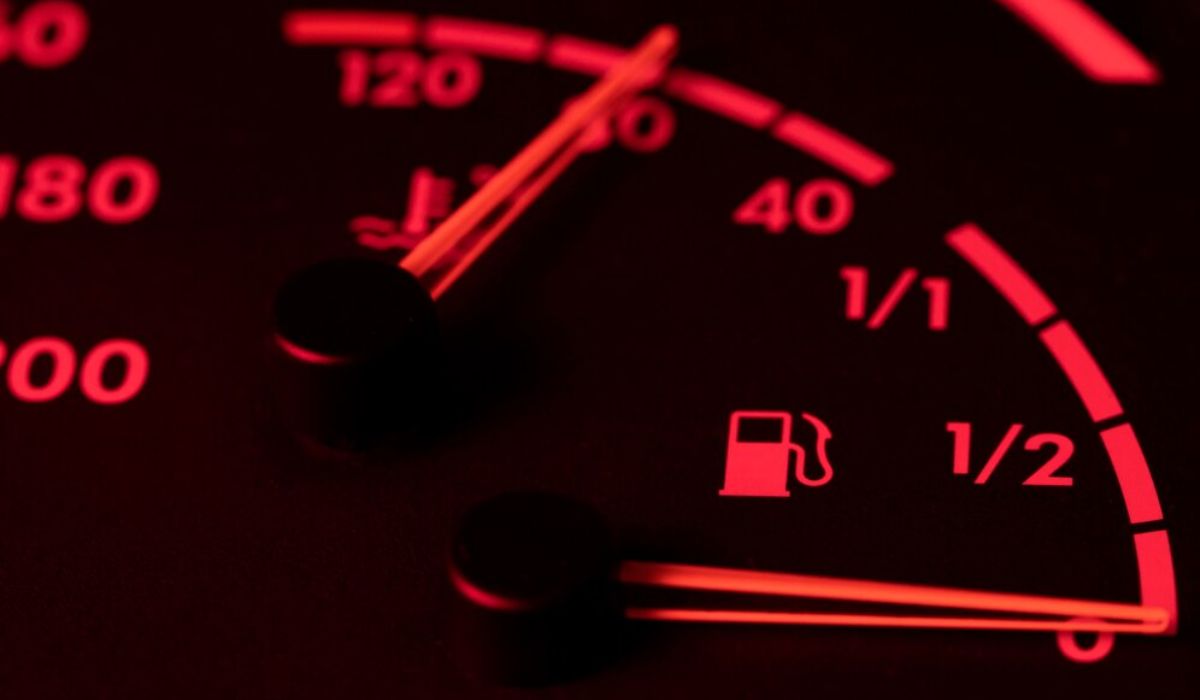When you get to the driver’s seat and you notice the ‘Engine MIL Inoperative or Indicates a Malfunction’ light, it can be very worrying. But this warning message doesn’t seem very threatening all the time. Despite the need to solve it, being aware of what measures to take and how to identify the problem will go a long way in saving you both your time and money. With this blog, you’ll learn what this warning means, why it appears, and how to solve it the right way.
In the UK, most car owners face a situation of having the engine malfunction indicator light (MIL) or receiving a message that the system is off. What one should understand is that this warning usually pertains to your car’s onboard diagnostics, where the engine and emissions components of a car are monitored. The subsequent parts of this article further explain the specifics of the failure, root causes, and ways to resolve the problem to save your time and effort.
Must Check: Can I Use 0W-20 Instead of 0W-16 in Hot Weather for Better Engine Performance?
What Is the Engine MIL Inoperative or Indicates a Malfunction Warning?
The engine MIL is inoperative or indicates a malfunction warning. It most usually relates to a problem with your car’s Engine Control Unit or Onboard Diagnostics. In layman’s terms, the Engine MIL (Malfunction Indicator Light) is the light on your dashboard that comes on when the ECU is not happy with one of your car’s parts. This sometimes entails the engine, the exhaust system, or any other component with an emissions control relationship.
When the message is ‘inoperative,’ it means that the MIL light does not work properly or the system cannot turn on the warning. On the other hand,d “indicates a malfunction, which means that the system has sensed that there is some problem, but it may not be able to diagnose the cause. In any case, both are problematic and deserve treatment because, otherwise, things will only get worse in the future.
Why Is the Engine MIL Important?
The Engine MIL is a predictive indication system that signals drivers about possible issues affecting the engine or emissions systems. This is crucial for UK drivers, mainly due to the current government’s monumental increase in vehicle emission standards. If the MIL illuminates, it may be because your car is not operating at its peak efficiency, and your fuel economy might be less than it should be, e.g., and the high emission rate.
Knowing why the engine MIL is inoperative or indicates a malfunction message appears, you would know how to safeguard your car and would be unlikely to take you for a raw deal. Tackling the problem as early as possible can also help ensure your car continues to be safe for use on the roads and passes the local UK MOT requirements.
Common Causes of the Engine MIL Inoperative or Indicates a Malfunction

Whenever there is an MIL inoperative or indicates a malfunction then it could be as a result of many things within the engine and emissions system of your car. The Malfunction Indicator Light (MIL) is intended to help the driver know when something is not right, and when it reads as ‘inoperative or indicates malfunction’ can also mean a problem with sensors or its wiring or control systems. Below are some of the most frequent causes of this issue:
1. Faulty Oxygen (O2) Sensors
Oxygen sensors are important devices to measure the amount of oxygen in your car’s exhaust system and they assist in controlling the air-fuel ratio for combustion. If the sensor is dead or not working properly, it will transmit imprudent signals to the Engine Control Unit (ECU), resulting in a wrong fuel mixture and of course, poor performance of the engine. This is one of the most common reasons the engine MIL is inoperative or indicates a malfunction message could come into operation.
2. Loose or Damaged Gas Cap
Failure of the EVAP system is another main reason the engine MIL is inoperative or shows a malfunction message. The gas cap has even other functions in the fuel system; it regulates fuel pressure in the system and also contains fuel vapour so as to let it out into the environment. If the cap is loose, it can set a DTC for fuel evaporation leaks, and the MIL will turn on because of it.
3. Faulty Spark Plugs or Ignition Coils
Spark plugs and ignition coils are common components in any car’s ignition system. Bad spark plugs cause misfires, poor acceleration, and rough running at idle or stall and thus may illuminate the engine MIL inoperative or indicate a malfunction light. In turn, ignition coils, through which voltage is supplied to spark plugs, can also go bad and cause the same symptoms.
4. Exhaust Gas Recirculation (EGR) Valve Issues
The EGR valve also works towards minimising the emission of dangerous nitrogen oxide (NOx) by cycling a segment of the exhaust gases back into the engine. The EGR valve can easily get blocked by carbon or mechanically wear out and this may result in things like engine knocking, rough idle, or high emissions. That is, when the EGR valve is either stuck, partially opened or fully opened, the MIL light will come on.
5. Failed Catalytic Converter
A catalytic converter is an important part of your car exhaust system, helping to change toxic emissions, including carbon monoxide and nitrogen oxides, into less hazardous gases. The converter can get blocked or worn out, especially if the engine has been misfiring or running in a wastefully rich mixture. If the catalytic converter fails to work properly, it will severely reduce the power of the automobile engine and turn on the MIL.
Read More:
- Top 10 Best Cars for Towing Caravans Like a Pro
- Best Cars That Are Easy for Elderly to Get In and Out of in the UK
- Is $30K a Good Starting Price for a Car? What to Know Before You Buy
6. Faulty Engine Control Unit (ECU)
A few of the common terms used for the car engine’s control centre are Engine Control Unit (ECU) or Engine Control Module (ECM). It regulates the amount of fuel that gets mixed with air, when and where the mixture will be ignited, and even many other details of when it occurs. Sometimes, the ECU may develop a fault in sending wrong information to certain parts, the engine MIL may be inoperative, or there may be a sign of a malfunction. ECU failure is a less frequent problem, yet it can be intricate and sometimes expensive to solve.
7. Faulty Mass Airflow (MAF) Sensor
There’s the Mass Airflow (MAF) sensor, which measures the quantities of air getting into the engine so that the engine can mix it with fuel to burn. The problem with the MAF sensor is that it can result in decreased fuel economy and fuel quality and increased emissions. If this sensor fails, the system may employ the engine MIL inoperative or indicate a malfunction message to the driver.
8. Vacuum Leaks
A vacuum leak may be defined as a loss of vacuum in the vacuum hoses connecting various parts of the engine. Depending on their location, these leaks can cause the engine to run too lean (too much air, little fuel) or have a rough idle, misfire, or stall. Other check engine light causes include a vacuum leak because the ECU observes varied air-fuel ratios.
Diagnosing the Problem: How to Read the Codes
In case you are: The engine Mil inoperative or indicates a malfunction warning, then the best approach is to check it. Fortunately, almost all vehicles being produced today feature an OBD-II port whereby you can actually read the codes that the ECU has produced. Here’s how to get started:
Use an OBD-II Scanner
An OBD-II scanner is a compact gadget that connects with the OBD port of your car and the port is normally situated close to the driver’s seat and beneath the dashboard. This one communicates with the ECU to extract some trouble codes stored within showing the problem. You can actually purchase/rent an OBD-II scanner or go to a nearby auto shop or any automotive store that offers free scans.
Interpret the Trouble Codes
When the scanner has obtained the codes, you’ll have to interpret these codes yourself. Most of these codes are in a general form, such as P0100 or P0300, where each of the codes will signify a particular problem with your car. Some common codes include:
- P0420: The readings of the different catalyst systems below the threshold usually point to a faulty catalytic converter.
- P0171: System too lean (associated usually with the air-fuel mixture system).
- P0300: Random misfire. This could generally mean that the spark plugs and ignition coils are faulty or worn out.
The list of trouble codes is available online or in the manual that comes along with your vehicle.
How to Fix the Issue: Step-by-Step Solutions
By realising the diagnostic trouble codes, one is in a position to start solving the issue. Here are some general steps to help you fix the most common causes of the engine MIL being inoperative or indicating a malfunction message:
Loosen/Remove or RestGas Cap
You should also see the scanner showing issues with Fuel vapour leaks. Look at your gas cap; if it is loose, simply adjust it, and if it is damaged, change it.
Replace Faulty O2 Sensors
If the problem is with the O2 sensor, you might have to take the time to replace it. This task usually involves disconnecting the current sensor and fitting a new one, which is a simple matter if you are mechanically inclined.
Replace Spark Plugs or Ignition Coils
Some engine problems associated with spark plugs or ignition coils can be solved by replacing the faulty part. In this article, take note of the type of engine oil you should use and the installation process.
Repair the EGR Valve
Here are the remedies for problems related to the EGR valve: If you have a dirty one, cleaning will solve the problem, but if the EGR valve is faulty, you replace it. If the situation persists and cleaning does not solve the problem, one may need to replace it completely.
Catalytic Converter Replacement
If the system diagnostics reveal that this catalytic converter is ill, it usually has to be replaced. This is even more costly, and thus, another estimate should be obtained before proceeding.
ECU or ECM Repair
If it is the case of the Engine Control Module, then it may need professional attention or the part needs to be replaced. ECU problems, quite often, are more serious and often require intervention by a professional mechanic.
When to Seek Professional Help
Although the majority of these concerns can be recognised and solved independently by the car owner, several issues are more serious. If this has been done and you still see the engine MIL inoperative or indicates a malfunction message, the next thing is to see a mechanic. This is especially the case with systems that use ECUs or when discussing such parts as a catalytic converter.
Conclusion
Coming across an engine MIL inoperative or indicating a malfunction warning is not very encouraging, but it’s very important not to panic. When you have to diagnose the problem using an OBD-II scanner then knowing the causes will help in solving the problem at the soonest. From a loose gas cap to a problematic ECU, addressing the problem will keep your car in the best working and emission-compliant condition within the United Kingdom. If you can’t solve the problem, then it would be wise to consult a professional immediately to ensure that your vehicle is roadworthy again as quickly as possible.


